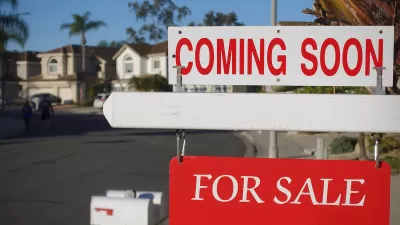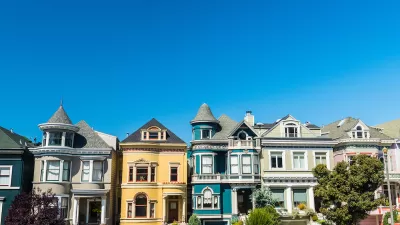An interview on the Congress for New Urbanism's Public Square examines the concept of incremental development—how it can benefit communities all over the country and how it improves on a century of large-scale development.

Robert Steuteville interviews John Anderson, principal of Anderson-Kim Architecture & Urban Design, and Eric Kronberg, principal of Kronberg Wall Architecture, about the virtues of incremental development and role of small developers in the building community.
The premise of the article, on the value of incremental development, is that "great places are built in small increments." On the other side of that coin is sprawl, which in the United States "grew hand-in-hand with the supersizing of the development industry." In the contemporary era, according to Steuteville, "Small urban developers can succeed by understanding that 'the project is the neighborhood'—and even a tiny development can build value and contribute to community. In doing so, small developers can be the craft beer to big developers' Budweiser."
The interview ranges from how incremental development benefits walkable urban places, how incremental development relates to New Urbanism, the craft beer industry as a model for development success, and the types of developments that fill the incremental needs of communities.
FULL STORY: Great idea: Incremental development

Study: Maui’s Plan to Convert Vacation Rentals to Long-Term Housing Could Cause Nearly $1 Billion Economic Loss
The plan would reduce visitor accommodation by 25,% resulting in 1,900 jobs lost.

Alabama: Trump Terminates Settlements for Black Communities Harmed By Raw Sewage
Trump deemed the landmark civil rights agreement “illegal DEI and environmental justice policy.”

Why Should We Subsidize Public Transportation?
Many public transit agencies face financial stress due to rising costs, declining fare revenue, and declining subsidies. Transit advocates must provide a strong business case for increasing public transit funding.

Paris Bike Boom Leads to Steep Drop in Air Pollution
The French city’s air quality has improved dramatically in the past 20 years, coinciding with a growth in cycling.

Why Housing Costs More to Build in California Than in Texas
Hard costs like labor and materials combined with ‘soft’ costs such as permitting make building in the San Francisco Bay Area almost three times as costly as in Texas cities.

San Diego County Sees a Rise in Urban Coyotes
San Diego County experiences a rise in urban coyotes, as sightings become prevalent throughout its urban neighbourhoods and surrounding areas.
Urban Design for Planners 1: Software Tools
This six-course series explores essential urban design concepts using open source software and equips planners with the tools they need to participate fully in the urban design process.
Planning for Universal Design
Learn the tools for implementing Universal Design in planning regulations.
Smith Gee Studio
Alamo Area Metropolitan Planning Organization
City of Santa Clarita
Institute for Housing and Urban Development Studies (IHS)
City of Grandview
Harvard GSD Executive Education
Toledo-Lucas County Plan Commissions
Salt Lake City
NYU Wagner Graduate School of Public Service





























